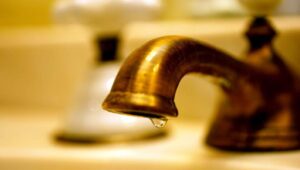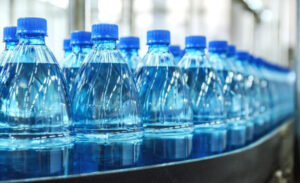Water Testing Standards
water testing standards are instrumental in specifying and evaluating the methods and facilities used in examining the various characteristics of and contaminants in water for health, security, and environmental purposes. These water testing standards allow concerned local government authorities, water distribution facilities, and environmental laboratories to test the quality of water and ensure safe consumption.
Calcium and magnesium salts in water are the primary components of water hardness which can cause pipe or tube scaling.
Scope
1.1 These test methods cover the determination of calcium and magnesium in water by complexometric titration and atomic absorption spectrometric procedures. Two test methods are included, as follows:
Test Method A—Complexometric Titration
Test Method B—Atomic Absorption Spectrometric
1.2 The values stated in SI units are to be regarded as standard. The values given in parentheses are mathematical conversion to inch-pound units that are provided for information only and are not considered standard.
1.3 This standard does not purport to address all of the safety concerns, if any, associated with its use. It is the responsibility of the user of this standard to establish appropriate safety and health practices and determine the applicability of regulatory limitations prior to use. Specific hazard statements are given in 12.2.6 and 20.6.

Water Quality Testing Guide: Cost, Checklist and More
Water quality is an important topic that most people fail to consider. Thanks to better technology and government regulations, most American drinking water is clean and meets health standards regarding chemicals and toxins. This may explain why potable water is rarely a concern.
In addition, the Environmental Protection Agency (EPA) regulates public drinking water via the Safe Drinking Water Act. However, 13 percent of the population primarily uses private water systems, such as wells. Because these systems are privately owned, it’s up to the owner to ensure the well is clean and the water meets quality standards. For well owners, a water quality test isn’t just advisable; it’s a necessity for health. According to the Centers for Disease Control and Prevention (CDC), unless you have concerns about your water quality, there’s no need to test public water since it’s highly regulated by the government.
Do you need a water quality test?
The Water Quality Association (WQA), the National Ground Water Association (NGWA) and the EPA recommend annual water quality testing for all homeowners who use a private well for potable water.
Do you have private or public water supply?
If you’re not sure whether you have private or public water, it’s easy to check. First, do you pay a water bill each month? If so, you probably have public water. Public water systems must meet National Primary Drinking Water Standards. Each year, you should receive a report my mail stating the results of their annual testing. Water utility companies are required to send these reports each July to all public water customers. This is called the Consumer Confidence Report, and it’s used to notify homeowners of any contaminants that may affect your water potability. You can also find your CCR online using this tool.
Annual Testing Guidelines
If you aren’t using public water, then you’re using private water (usually well water). In this case, you’re responsible for your own quality testing, which you should conduct yearly.
Water Testing According to ISO 11133:2014 Guidelines
standard guidelines for culture media and water testing quality and performance control are mandatory for accredited laboratories performing microbiological testing of food, animal feed or water using culture media. Organizations should therefore be aware that analytical laboratories involved in microbial culture analysis of food, animal feed or water must now follow the International Organization for Standardization (ISO) standard ISO 11133:2014.
Microbiology of food, animal feed and water—Preparation, production, storage and performance testing of culture media, covers quality control (QC) and preparation standards for media used for microbiological analysis in food and water safety laboratories. The standard was first published in May 2014 and underwent review in November that year. Key changes made to the guidelines included incorporation of water testing into the same standards as food and feed.
The mandatory standard now governs analysis of foodstuffs, including animal feed, as well as samples taken for environmental monitoring in the production environment. The latter includes water, whether intended for drinking or as part of the processing workflow. Not only does ISO 11133:2014 apply to analytical laboratories, but it also is mandatory for commercial suppliers producing and/or distributing media, non-commercial bodies supplying media and laboratories preparing their own media in-house.
Analysts should note that it also covers diluents and transport media. Furthermore, the guideline now lists the specific culture strains and corresponding World Data Centre for Microorganisms (WDCM) strains to be used, requires dilution to extinction for liquid media, states the number of passages required for culture strains and specifies reference media.
Furthermore, the ISO guideline states that all quality and performance testing for culture media must follow conditions as close to actual sample testing workflows as possible. For laboratories buying in their culture media from an accredited source, this means that the ISO-compliant manufacturer will have carried out the majority of required testing; for those still making their own media, there are protocols to follow according to the ISO standard.

Water – Microbiological Analysis Test Method Guide
Key Points:
Microbiological water testing looks for indicator organisms as a sign of faecal contamination rather than testing for specific pathogens
Correct sampling procedures as instructed by international standard protocols must be adhered to
Routine microbiological testing of drinking water supplies, recreational waters, and environmental waters is essential for the protection of public health
Programme of testing
The most effective way to check water supplies for faecal contamination is microbiological analysis, and a range of test methods designed for that purpose has been developed for the water industry. Instead of carrying out separate tests for each of the potential pathogens, viruses, or parasites that might be in the water, microbiologists test for indicator organisms that are always present when enteric pathogens and viruses are.
is a term used to denote a group of gram-negative bacteria that can ferment lactose with a production of gas within 48 hours at either 35ºC or 44/44.5ºC. These characteristics allow for easy isolation, detection, and enumeration in the lab and are the gold standard for microbial water testing. They are always present when enteric pathogens or viruses are detected in water testing. However, a high ‘total coliform’ count doesn’t necessarily mean faecal contamination and requires a second step to identify the faecal coliforms from coliforms found in the environment. Escherichia, Enterobacter, Klebsiella are the faecal coliforms, and Citrobacter and Serratia are found in plants and soil.
The faecal coliforms, also known as thermotolerant coliforms, can survive at temperatures of 44ºC and 44.5ºC, which allows simple differentiation between the two types. The microbiologist will be looking for counts of faecal coliforms such as E. coli, whose only habitat is the intestine, and whose life outside it is short-lived; is seen as the ideal indicator organism. Its presence in a sample of drinking water means that the water is unsafe for human consumption.
The presence of faecal streptococci/Enterococci is evidence of faecal contamination. Faecal streptococci tend to persist longer in the environment than thermotolerant or total coliforms and are highly resistant to drying. It is, therefore, possible to isolate faecal streptococci from water that contains few or no thermotolerant coliforms as, for example, when the source of contamination is distant in either time or space from the sampling point. Faecal streptococci grow in or on a medium containing sodium azide, at a temperature of 37-44 °C. They are usually detected by the reduction of a dye (generally a tetrazolium-containing compound) or the hydrolysis of aesculin. Conventional methods may give “false positives,” and additional confirmatory tests may be required.
Water Quality/Well Testing/Well Disinfection
A well that is properly located, constructed, maintained, and tested can provide a reliable and safe drinking water source and serve many domestic, agricultural, and commercial purposes.
You and your licensed well contractor have important roles in keeping your well safe. A safe well helps keep your household healthy and protects groundwater.
Your Licensed Well Contractor’s Responsibilities When Constructing Your New Well
Ensures proper well location.
Correct distance from contamination sources (see image below).
Good drainage away from the well.
Highest practical site on the property.
Disinfects your well to get rid of harmful bacteria.
Collects an initial water sample after construction is finished to test for coliform bacteria, nitrate, and arsenic before you start using your well water for drinking or cooking.
Gives you a copy of the water test results and the Well and Boring Construction Record.
Test your water.
You are responsible for regularly testing your well water. Both natural sources and human activities can contaminate wells and cause short- or long-term health effects. You cannot taste, see, or smell most contaminants. MDH recommends using an accredited laboratory to test your water. Contact an accredited laboratory to get sample containers and instructions, or ask your county environmental or public health services if they provide well water testing services.